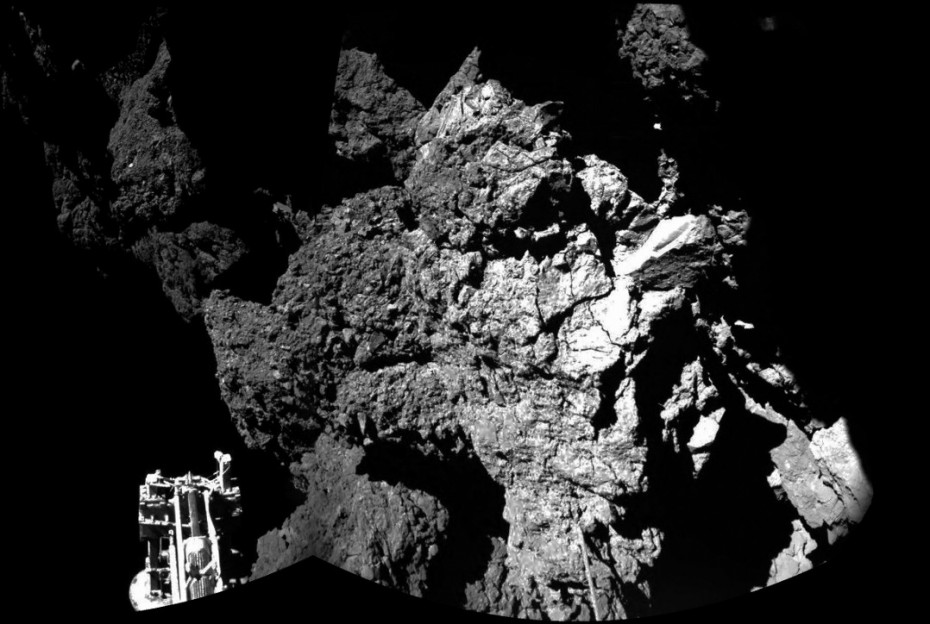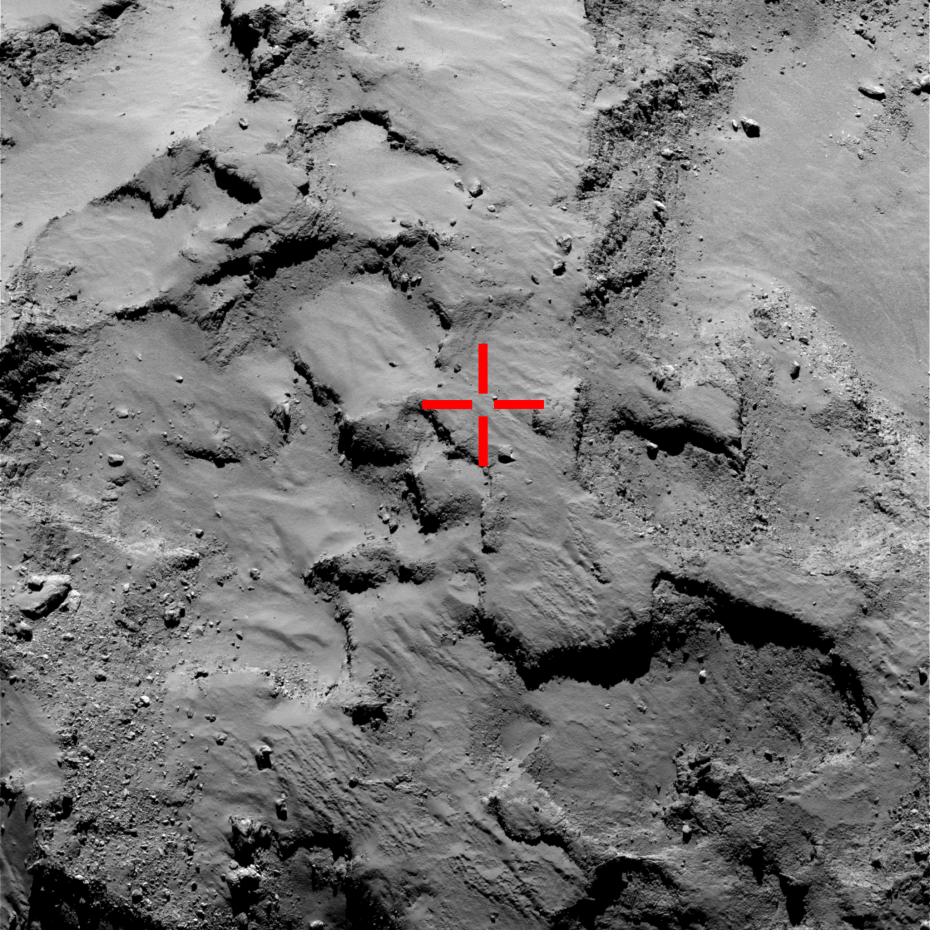
Philae’s CIVA instrument captured this image of its landing site. Photograph: European Space Agency
European space agency scientists believe the Philae lander may have plopped down on its side when landing on comet 67P.
The first monochome image sent back from the space craft more than 300 million miles away from us shows the bumpy, crackled comet surface with one of Philae’s three legs in the bottom left. Scientists don't yet know if that leg in the photo is touching the comet's surface, but it's clear that Philae is not level. It may be wedged into a pit.
“We’re either looking into a ditch or we are against a wall,” ESA Rosetta project scientist Matt Taylor said.
From Spaceflight Now's coverage:
We saw both something that man built — the lander — you see the foot there, and something that nature built 4.6 billion years ago, which is a comet essentially preserved as it was at that time, containing all the history that we’re trying to look at,” said Jean-Pierre Bibring, Philae’s chief scientist and head of the CIVA camera team from Institut d’Astrophysique Spatiale in Paris. “We have no idea what is around, or whether or not what is black is just shadow or open sky.”
Bibring said many scientists expected the comet’s surface to be powdery, allowing the lander to settle instead of rebounding back into space.
“It’s not a powder, it’s a rock, so it’s like a trampoline,” Bibring said. “You go there and it ejects you immediately afterwards.”
Officials have not pinpointed the lander’s location on the comet.

How Esa scientists believe Philae has landed on the comet – on its side. Photograph: European Space Agency

This
image from Rosetta’s camera, taken in September, shows the place Philae
first landed before bouncing twice and finally coming to rest about a
kilometer away.

No comments:
Post a Comment